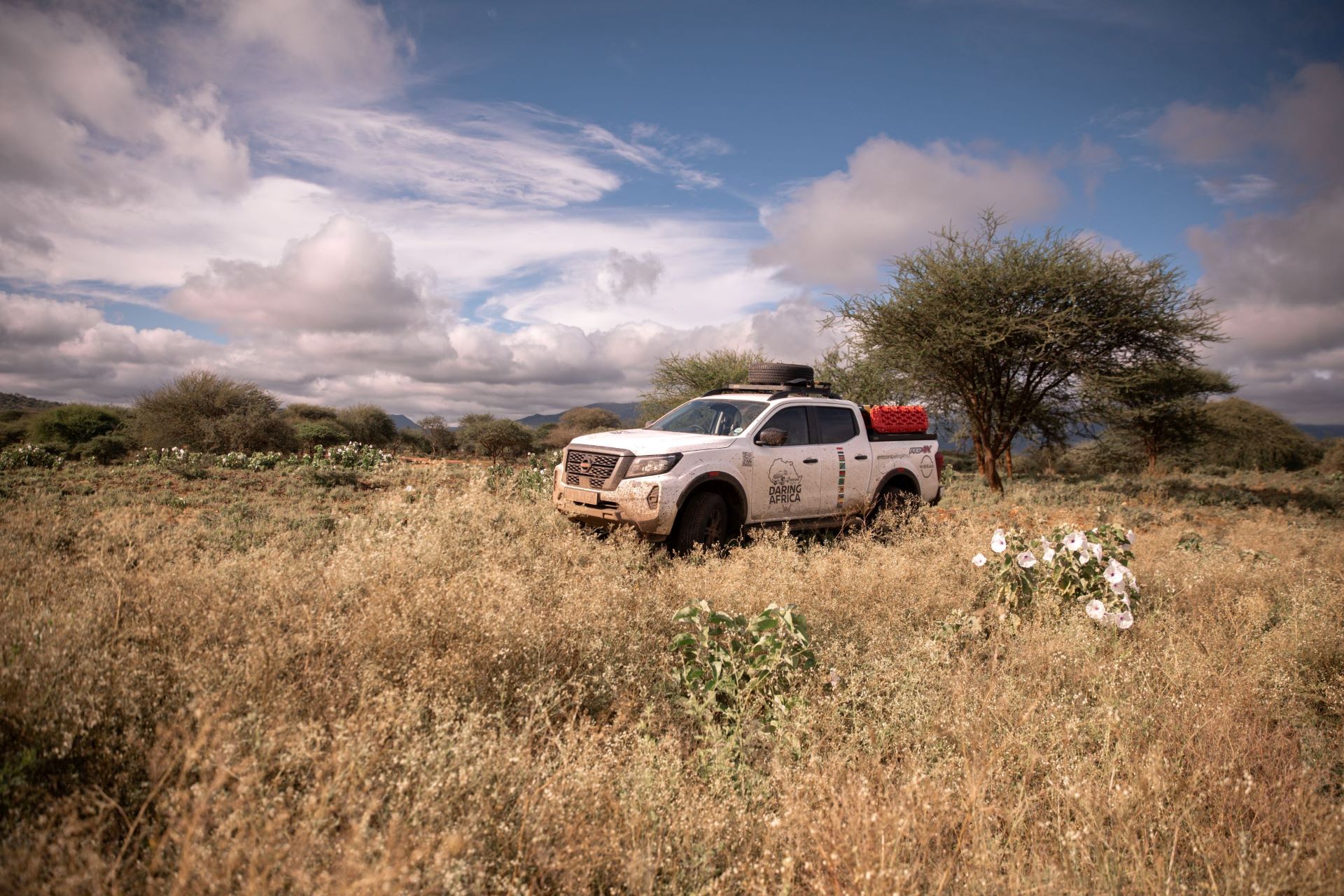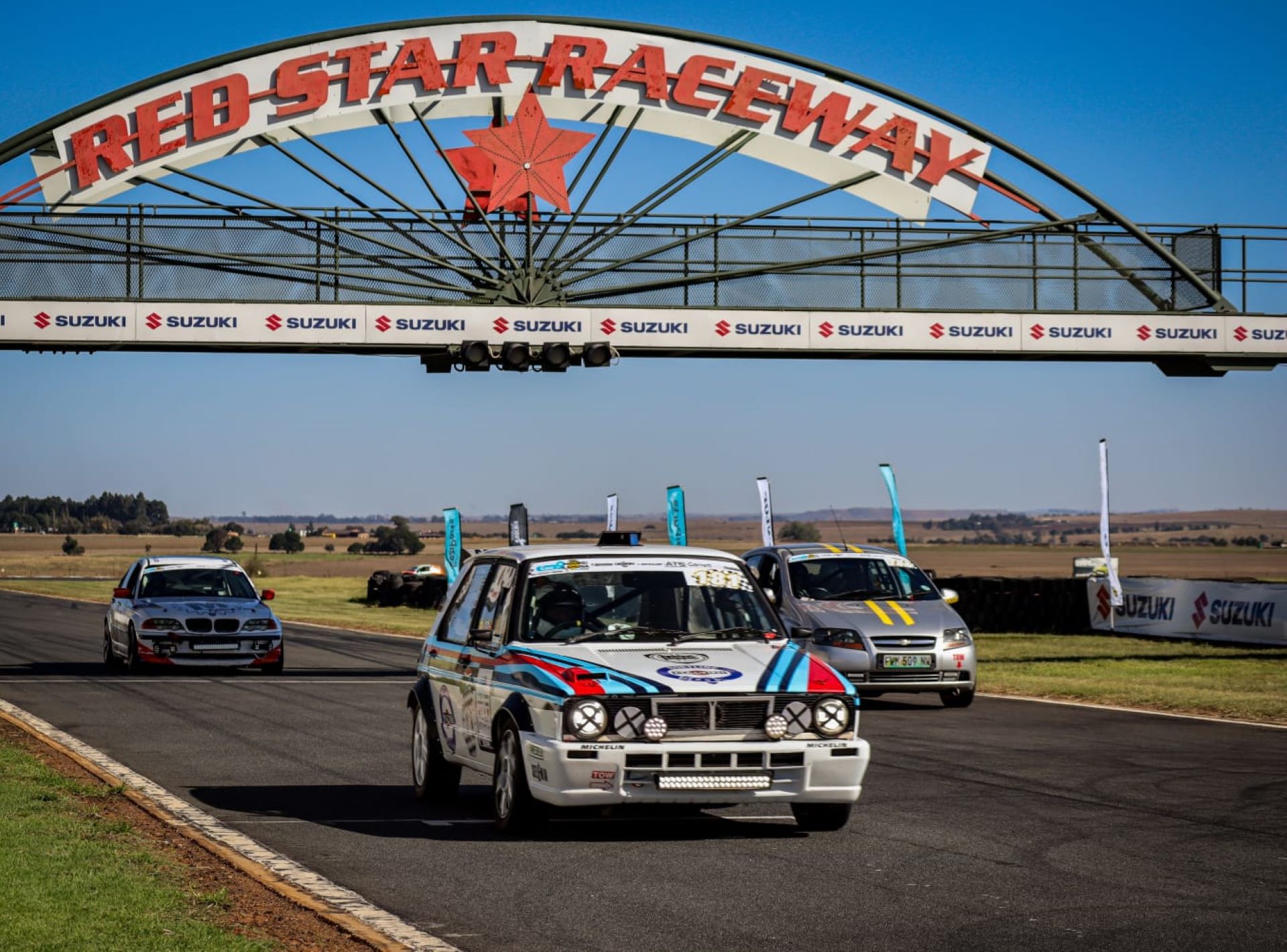DYNAMICS
At the core of the Discovery 3’s outstanding on-road and off-road dynamics is the all-new Integrated Body-frame, a Land Rover patented technology. “This innovative new vehicle platform architecture has enabled us to combine the advantages of a monocoque with traditional body-frame off-road strength,” says Discovery 3 chief programme engineer Steve Haywood. “It delivers the comfort, refinement and on-road attributes of a monocoque, while setting new standards for off-road performance.”

OUTSTANDING ON-ROAD AND OFF-ROAD DYNAMICS
The Integrated Body-frame is unique to – and was developed by – Land Rover, and is crucial to the dynamic excellence of the Discovery 3. It carries the body and the suspension, it encloses and protects vital electronic and mechanical systems and it provides a stable platform for the vehicle’s many electronic controls.
“Its advantages over a conventional ladder-frame include lower weight and greater rigidity – which aid handling and ride, especially on the road,” says Haywood. “Its benefits over a monocoque (or unitary) body are its strength and ruggedness.”
The new frame structure is special because of its advanced computer-aided design techniques, its trend-setting hydroforming production process and its use of advanced high-strength steels. The result is lightness, great strength and an unusually complex yet efficient shape.
The technique of hydroforming uses fluid pressure to form shapes. It allows for a much greater variety of shapes and sizes than conventional tooling, and also allows for tighter tolerances, increasing precision and reducing weight. It is especially useful for single large components, which would otherwise be made from multiple stampings, bolted or welded together. Using high-strength steel, the result is a frame that is structurally stronger and substantially stiffer, yet lighter.
The flexibility of hydroforming allows engineers to design an optimum frame shape, unencumbered by conventional production compromises. The shape can be much more complex and much more efficient. The side members on the Discovery 3, for instance, are much more curved than a conventional ladder-frame, allowing for width in the centre section but a tapered front, which improves the turning circle.
The complex frame shape also improves crash performance, boosting passenger and driver safety. Substantial side members protect the Discovery 3 from side impact, and the rear structure of the body-frame is designed to protect the fuel tank and filling systems.
The Integrated Body-frame assists both on-road and off-road performance. It gives a low centre of gravity, by keeping major weight as low as possible. The production versatility of the frame allows for the rear drive shafts to pass through the chassis frame, obviating the ‘swan neck’ of other designs. This not only protects the shafts, it helps lower the centre of gravity and allows the floor to be unusually flat.
The frame design improves off-road performance by minimising front and rear overhangs, to give outstanding approach and departure angles. Vulnerable systems, cables and pipes are packaged between the frame members to protect from damage. By carefully placing key components inside, through, or around the frame, the underside of the vehicle has been kept extremely smooth, minimising the risk of obstacles being snagged when off-road.
ADVANCED AND USER-FRIENDLY TERRAIN RESPONSE
Land Rover’s new Terrain Response system – standard on all Discovery 3 models with air suspension – is an advanced but user-friendly technology that optimises vehicle driveability and comfort, as well as maximising traction. Simply select one of five Terrain Response settings to suit the driving conditions and a multitude of the vehicle’s functions are tuned to deliver optimum performance. Accessed via a rotary control in the centre console, the five Terrain Response programs are for:
-
General driving
-
Grass/gravel/snow*
-
Mud and ruts
-
Sand
-
Rock crawl
-
For various slippery conditions, on-road or off-road
Terrain Response uses a high-speed electrical architecture network to control the relevant vehicle features, systems and technologies, including:
-
Engine management system: the throttle map is altered, improving driveability by suiting torque delivery to the chosen terrain
-
Electronic control system: of the automatic gearbox, to optimise gear-change points
-
Air suspension ride height: automatically adjusts to give maximum height in the ‘rock crawl’ and ‘mud and ruts’ programs. This is also automatically activated whenever low range is selected
-
Dynamic Stability Control (DSC): normally stops torque to a wheel after loss of traction, but in some off-road situations torque feed is still desirable, even when traction is being lost. Terrain Response automatically adjusts the DSC, so appropriate torque is maintained
-
Electronic Traction Control, Brakeforce Distribution & Anti-lock Brakes: these slip and braking control systems are all adjusted and tuned by Terrain Response to offer optimum grip, braking power and safety on the chosen terrain
-
Hill Descent Control (HDC): the Queen’s Award-winning Land Rover technology that automatically restricts speed downhill, using the anti-lock brakes, and enables drivers to remain in control even on the most slippery of downhill stretches. HDC is automatically engaged on all programs except ‘general driving’, and downhill speed rates vary depending on which surface is selected (in ‘rock crawl’ the lowest speed is selected to prevent vehicle damage)
-
Electronically controlled centre & rear differentials; With different slip or locking rates for the different terrains
The Terrain Response system works continuously, with the ‘general driving’ program optimising the vehicle set-up for everyday on-road use. However, it is the off-roading programs that demonstrate to the full Land Rover’s unique experience and expertise.
“We analysed the characteristics of nearly 50 different types of off-road surface, and determined the vehicle system inputs necessary to optimise performance on each,” says chief programme engineer Steve Haywood. “We concluded that these can be distilled into just a handful of programs – and those are the settings we offer on Terrain Response. It’s like having an expert alongside you, to help you get the best out of the vehicle, whatever the conditions, on-road or off.”
Terrain Response was previewed on the recent Range Stormer concept car and is making its production debut on the Discovery 3.
FULLY INDEPENDANT SUSPENSION WITH CROSS-LINKED AIR SPRINGS
For optimum on-road handling and refinement, the Discovery 3 is fitted with fully independent suspension front and rear, which gives much greater driver feedback, car-like handling, and good on-road ride.
Double wishbones are used front and rear. This is an optimal set-up for on-road handling and refinement, and yet on the Discovery 3 it also offers generous wheel travel – 255mm at the front and 330mm at the rear – for excellent wheel articulation and off-road traction.
Coil sprung suspension is standard on entry-level models, and is used in conjunction with hydraulic dampers. This is a tough, well-developed solution, to offer a good ride/handling balance. However, all higher series Discovery 3 models feature cross-linked air suspension, increasing on-road refinement, off-road capability and overall versatility.
The air springs are computer controlled, giving automatically softer or firmer springing, depending on road or track conditions. They are also cross-linked, further aiding off-road capability. Special software detects off-road driving and cross-connects the system. Air displaced by the upward movement of an air spring is transferred to the spring on the opposite side, forcing it down, improving composure. This mimics the action of a traditional beam axle, by boosting articulation and improving wheel contact.
The air springs also provide a range of ride heights for the Discovery 3. This is useful on-road, improving access to the vehicle by selecting the ‘low’ height setting, and off-road, where the ‘high’ setting gives extra ground clearance. These height settings can be easily selected manually, by a simple switch, or can be set automatically by the Terrain Response system.
Tyres are specially developed to suit this multi-purpose vehicle and, as with all original Land Rover fitments, are suitable for on-road or off-road use. All wheels are alloys, in sizes from 17-inch (235/70 tyres), through 18-inch (255/60 tyres), likely to be the most popular choice, to 19-inch (255/55 tyres).
ELECTRONIC AIDS IMPROVE TRACTION, BRAKING & HANDLING
The Discovery 3 has an advanced full-time 4×4 system, but to improve grip further in all conditions, this is supplemented by some of the most advanced electronic controls in the automotive industry.
Electronic Traction Control (ETC) ensures that grip is optimised in all conditions, by automatically reducing wheelspin to any tyres losing grip. The Dynamic Stability Control is another computer controlled aid that seamlessly, and without any driver involvement, ensures that the vehicle heads in the intended direction, avoiding skids or any other potential loss of control. Like ETC, it is especially valuable in slippery on-road or off-road conditions.
Land Rover’s patented Hill Descent Control (HDC) is fitted to the Discovery 3. This Queen’s Award-winning technology regulates downhill speed, ensuring that the driver stays in control even on slippery, steep descents.
All these technologies are linked to the standard four-channel ABS braking system. Two different braking specifications are offered, depending on vehicle specification. Both provide large ventilated disc brakes all round, with twin-pot sliding calipers at the front and single pot callipers at the rear.
The more powerful braking system, used with the V8 engine, offers 337x30mm front and 350x20mm rear discs. The other system uses 317x30mm front discs and 325mmx20mm rear discs. Electronic Brakeforce Distribution (EBD) provides optimal braking regardless of the way the vehicle has been loaded, adjusting front-to-rear braking balance automatically. Emergency Brake Assist (EBA) automatically boosts pressure to the braking system if emergency braking is detected, reducing stopping distance and improving safety.
For the first time on a Land Rover vehicle, the Discovery 3 features an Electronic Park Brake, which frees up the space in the centre console taken by a conventional handbrake. It is applied by a console-mounted switch and disengaged automatically when driving off.
PRECISE RACK-AND-PINION STEERING
The Discovery 3 has hydraulically-operated, power-assisted rack-and-pinion steering, which is both linear in feel and intuitive. The rack is mounted directly onto the frame to improve response and rigidity. It is protected from rocks and other off-road snags by a substantial body-frame cross-member.
HEADLAMPS THAT ‘SEE’ AROUND CORNERS
The Discovery 3 offers as an option one of the most advanced lighting systems in the world, featuring headlamps that swivel when cornering. Linked to steering angle, vehicle speed, axle position and gear selection, they improve illumination and give the driver a better idea of what lies ahead.
Entry-level models feature twin-pocket halogen headlamps, while the mid-line system uses bi-function xenon projectors with auxiliary halogen main beam lamps. Optional fixed cornering lamps are also available (except for North America).
High-level models get an adaptive front lighting system (AFS). Linked to the vehicle’s sophisticated electrical architecture, AFS receives information on vehicle speed, steering angle, axle position and gear selection. Analysing this information, the projectors swivel left or right accordingly. Additional static bending lights (not available in North America) are mounted at 45 degrees to the car line, and give extra light to the direction in which the car is turning. They are also illuminated at low speed to assist with manoeuvring or parking. AFS also features dynamic levelling.
Front lights are protected by tough polycarbonate covers and have optional pressure wash. The rear lights are mounted high on the rear corner pillars for good visibility.


